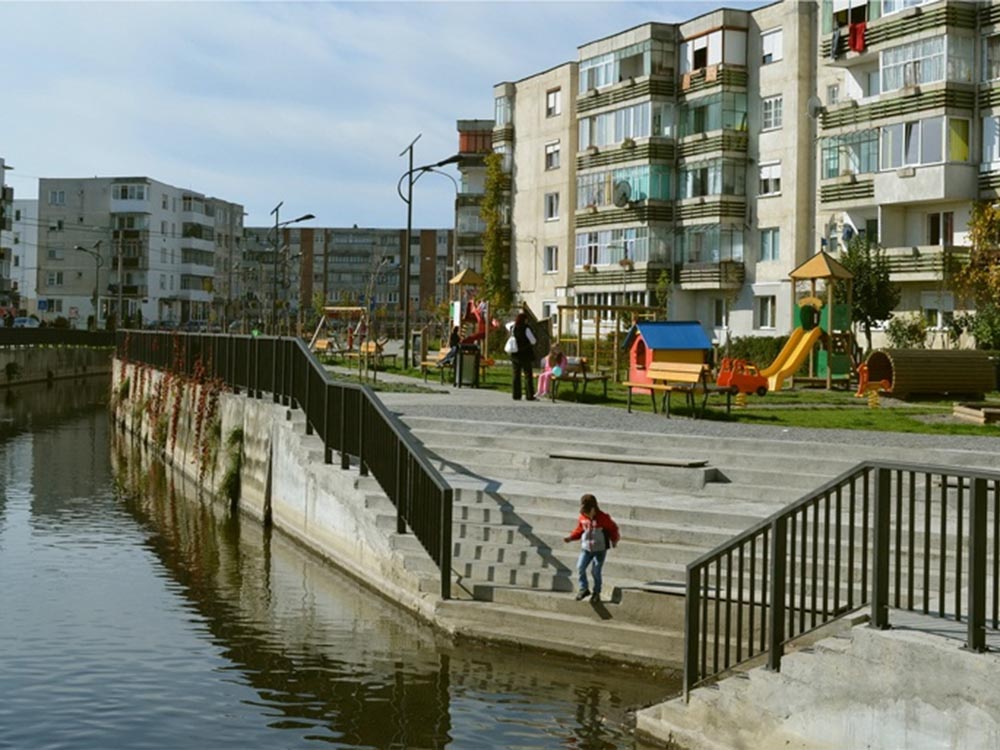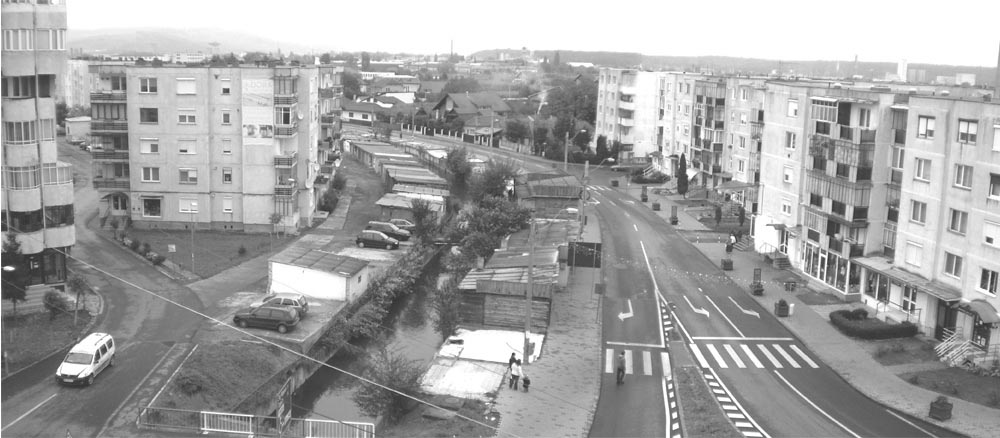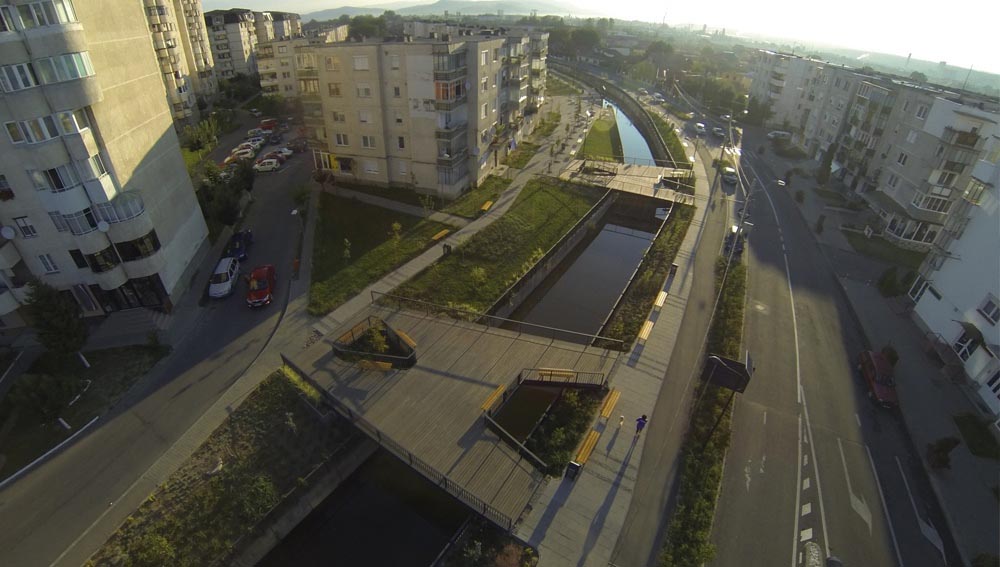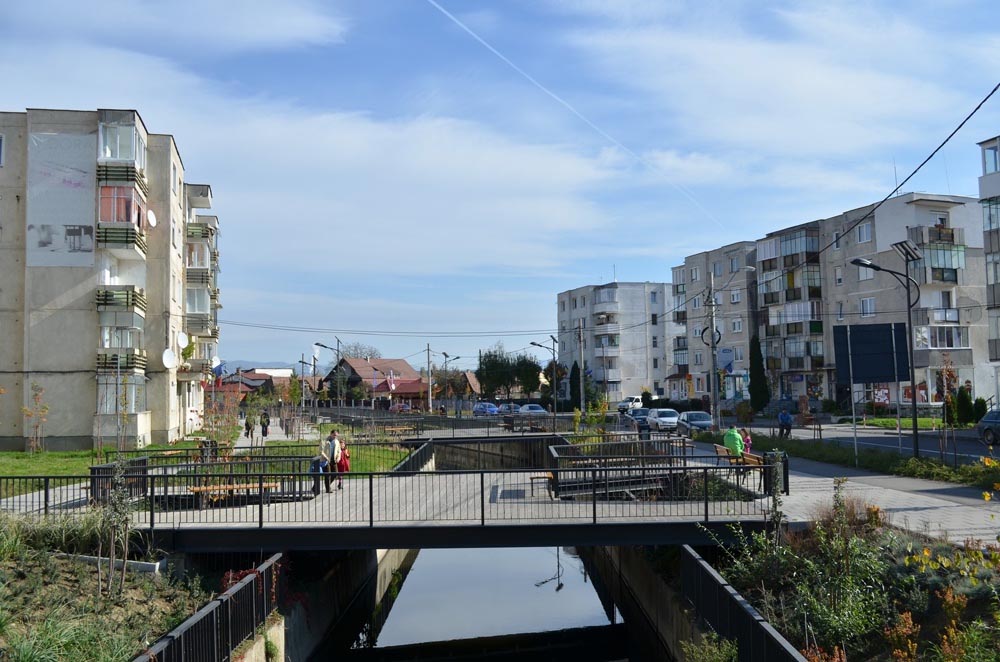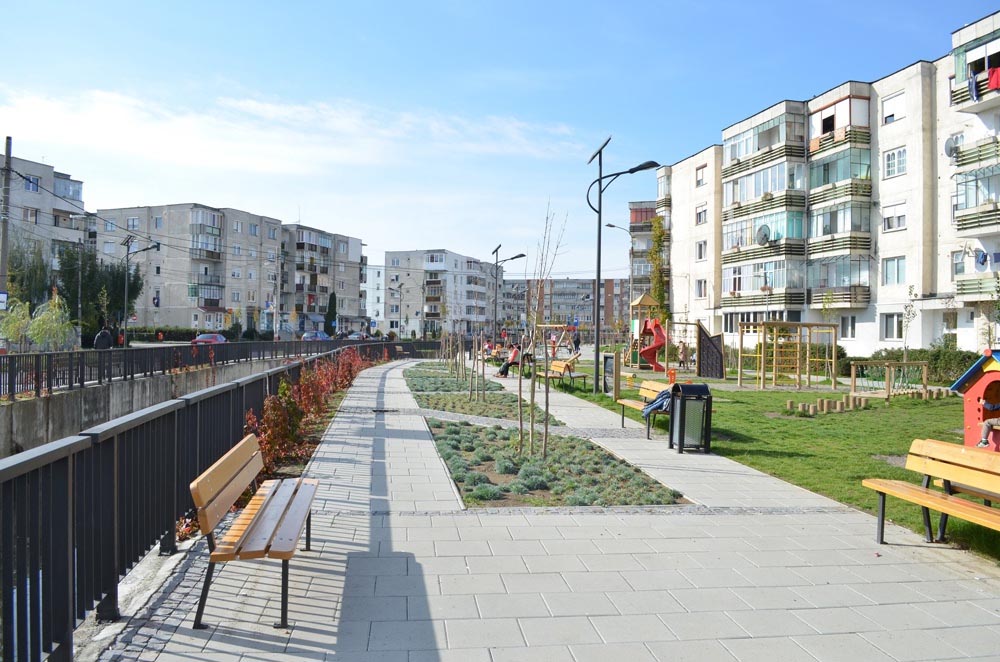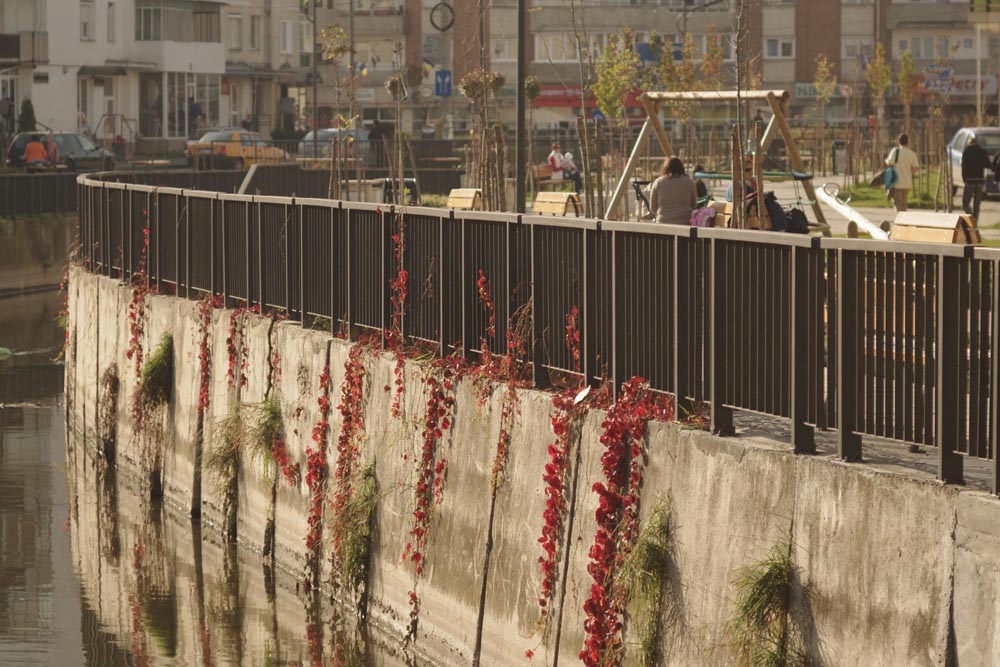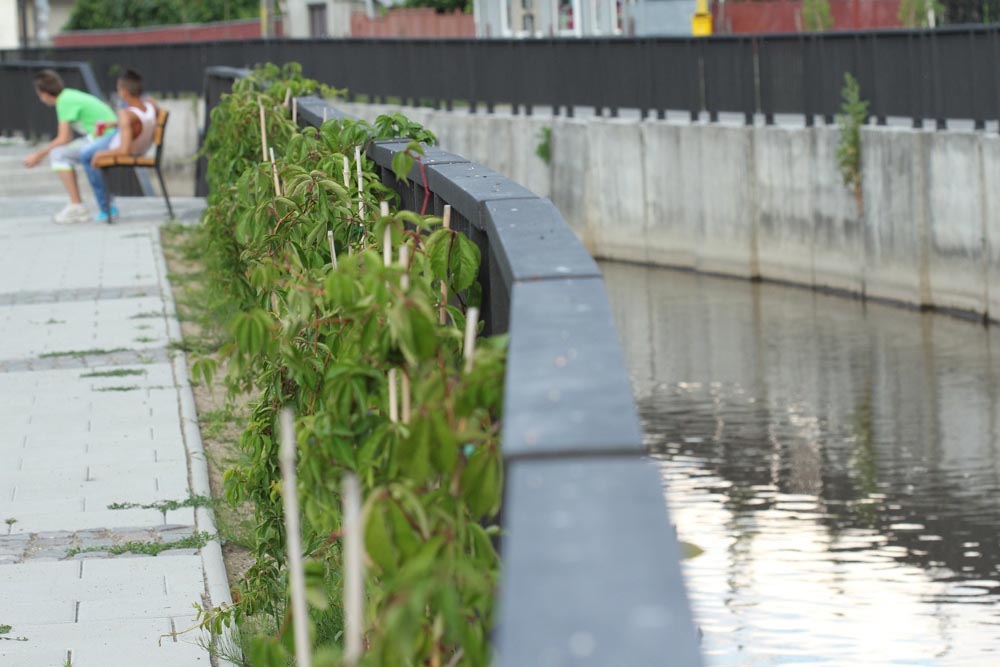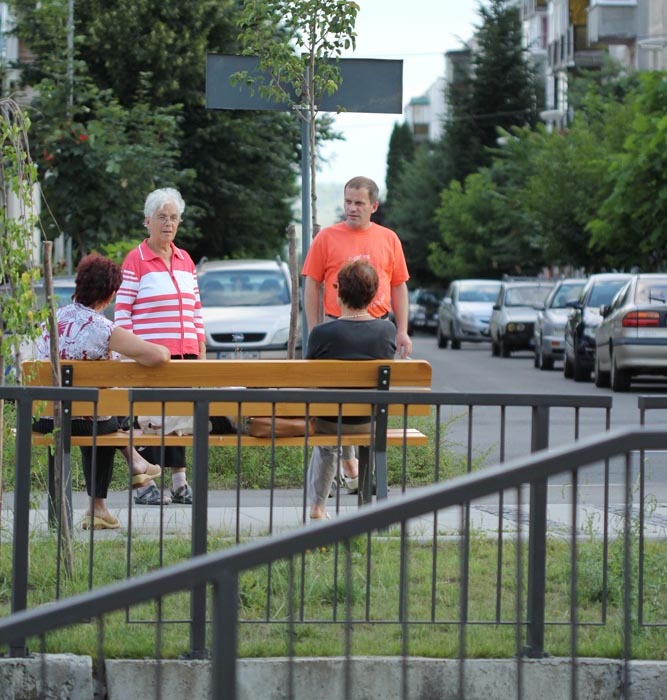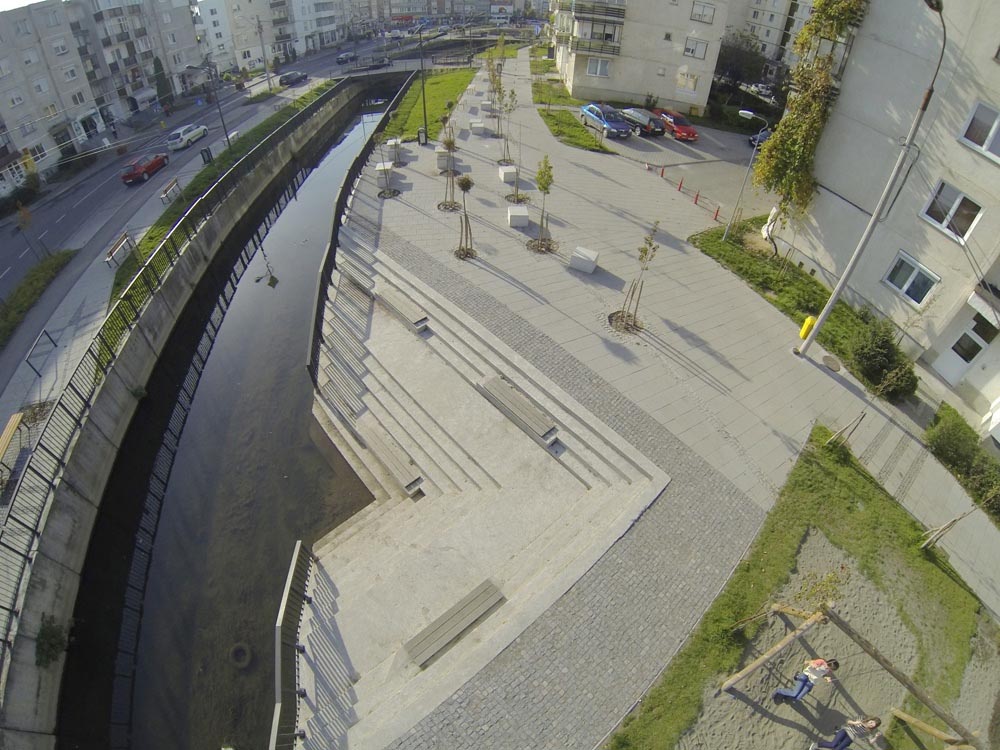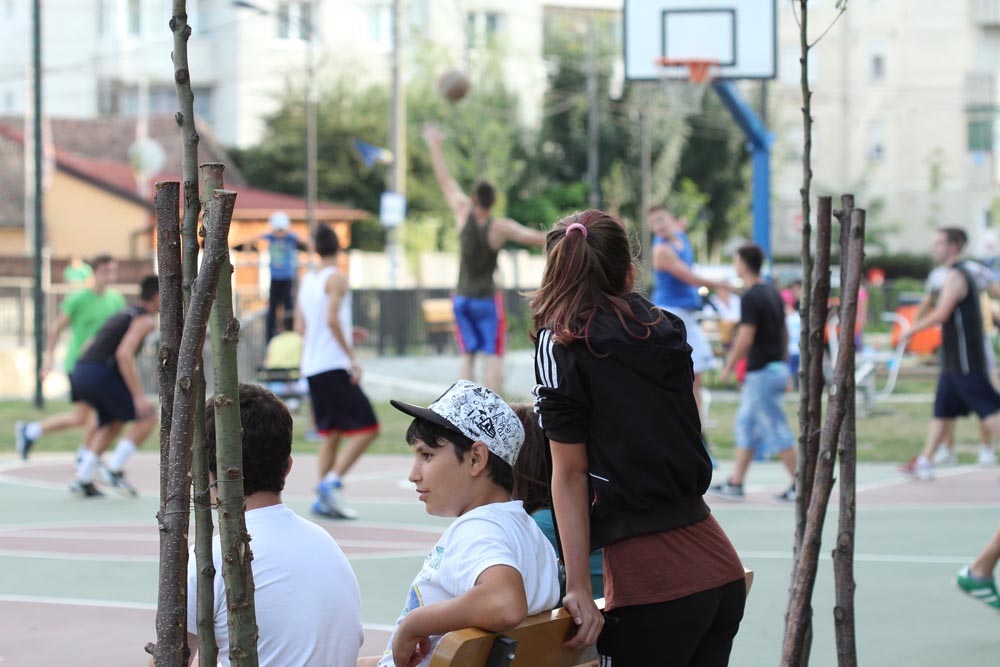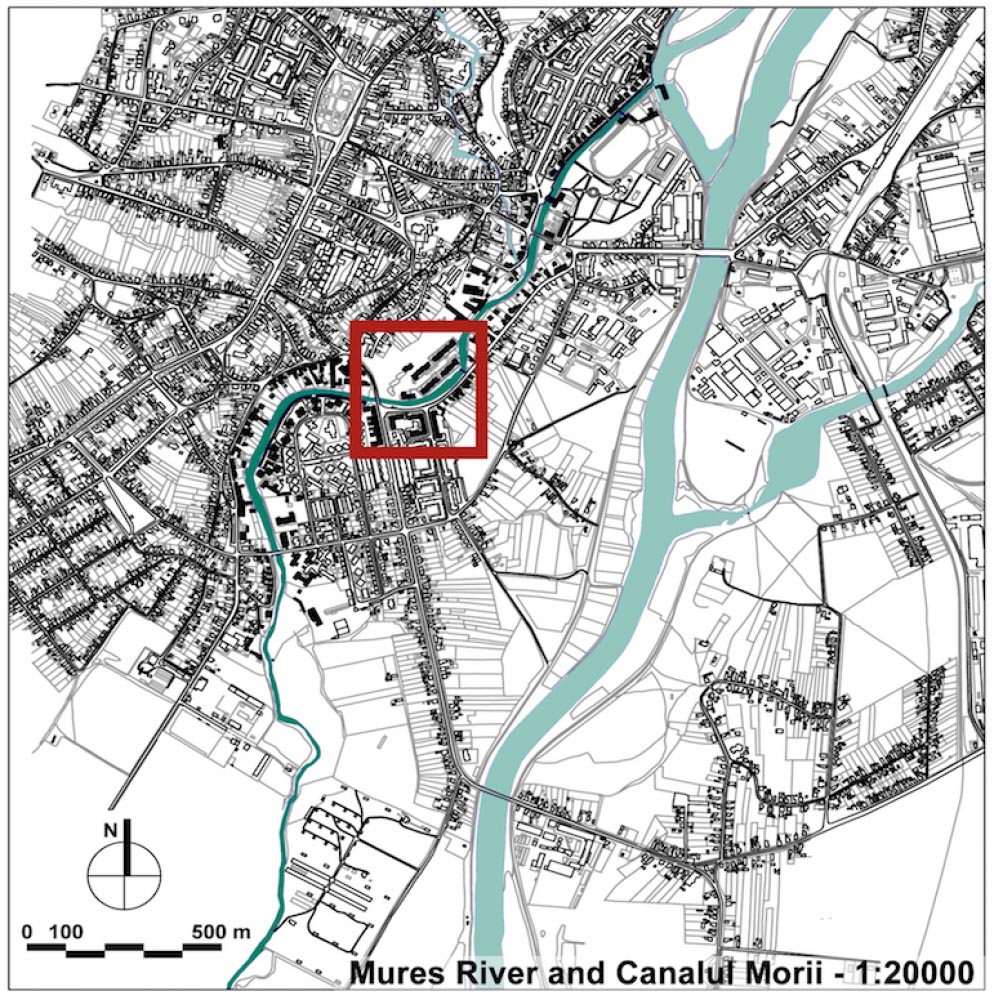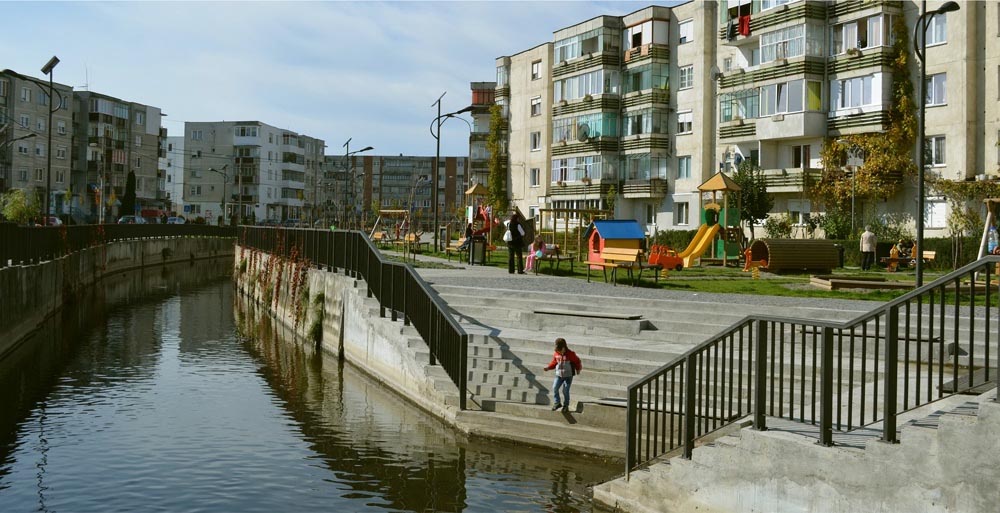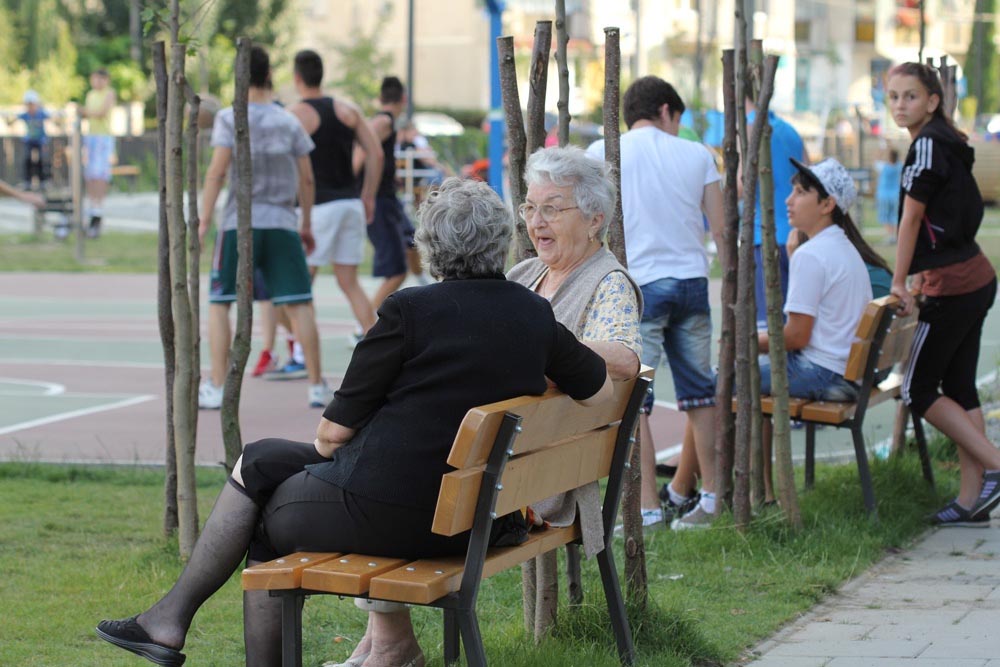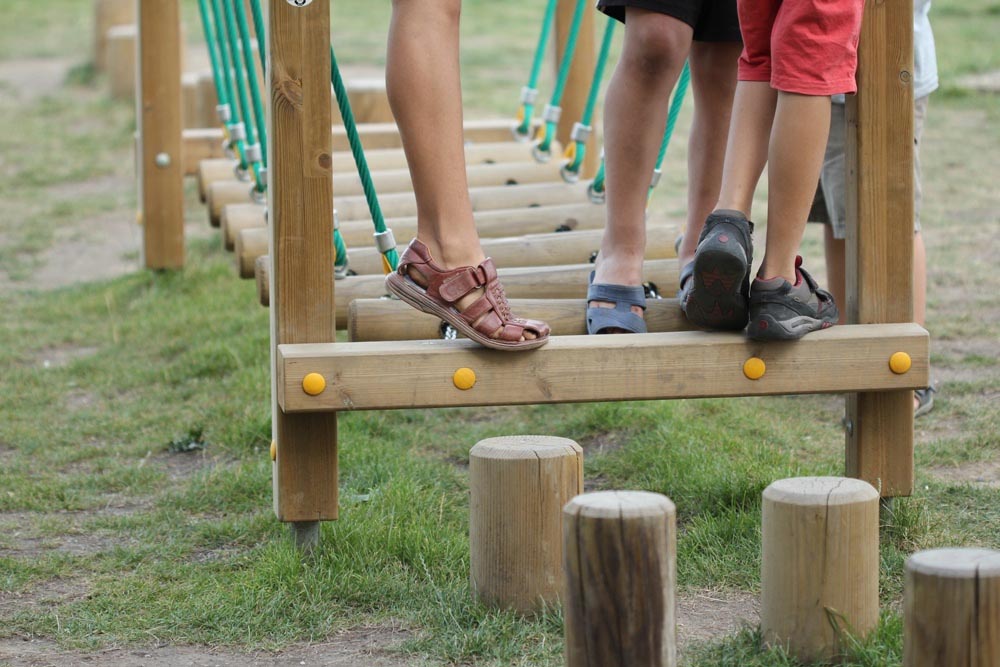Previous state
After the 1990s, aversion for public space was a constant in many cities that had been part of the old Soviet regime. The pre-eminence given to the private vehicle as a symbol of individual emancipation, together with a discrediting of the public sphere, which was perceived by a good part of the population as a source of oppression, resulted in the devastation of many urban landscapes the length and breadth of Eastern Europe. This was the case in Reghin, a Romanian town with a population of just over 30,000, which did not even have a municipal architect who might be capable of introducing improvements in the town for the benefit of its inhabitants. Indeed, the team of engineers who were responsible for public space maintenance devoted most of their attention to managing traffic flows.
This neglect was clearly visible along the banks of the Morii Canal as it crosses through the Libertății neighbourhood on the south side of the town. In the 1980s this branch of the Mures River was channelled by means of concrete walls in order to prevent floods and, a decade later, both its banks were completely privatised and built-up. The town council, proprietor of the land next to the canal, divided it into small lots and gave permission for temporary constructions. These were private garages, kiosks, and storage rooms which, in fact, were solidly built with concrete foundations and brick walls. Lined along both banks, these buildings faced away from the water, which could no longer be seen by anyone walking by. The neighbourhood was totally deprived of shared spaces for leisure activities, and Duzilor (blackberry) Street on the south side of the river lost all the brambles which had given it its name.
Aim of the intervention
In 2010, a group of Reghin-born architects who were now residing in other cities took the initiative of embarking on a consciousness-raising campaign among the residents of Libertății to inform them about the benefits they would derive from the restoration of the banks of the canal as shared spaces. Aware of the difficulties people tend to have when trying to understand plans and translate them into a real scale, they produced a series of figurative images showing the effects of a hypothetical refurbishment of the banks of the Mirii Canal, now free of buildings and turned into a community leisure space. They then made a series of postcards which they circulated among the businesses in the neighbourhood. This was such a successful initiative that a public meeting was convened so the architects could explain the details to local residents. The idea was that the neighbourhood should restore its contact with the water of the canal so that everyone could enjoy it without physical barriers or visual obstacles. In the end, the mayor agreed to the proposal and the town council decided to undertake the renovation with a budget of almost half a million euros.
Description
The termination of leases for the land beside the canal and the demolition of all its buildings freed a surface of six thousand square metres along its banks and made the water visible again. In order to enhance the benefits of this renewed contact with water the council constructed two new footbridges, which were to be more than mere ways of getting from one side of the canal to the other. Their trapezoidal bases are covered with wooden planks and they are wide enough to invite people to linger there and enjoy an axial view of the canal. Downstream, an incision made in the retaining wall has made it possible to insert steps going down to the water, thus creating something like a small quay.
The banks of the canal are now two waterside walks open to everyone and equipped with basketball courts, playgrounds and fitness zones. Deciduous trees have been planted to provide shade in summer. The blackberries have also been restored to Duzilor Street and hanging varieties planted at the top of the retaining walls will cover the concrete soon. The banks have been paved with concrete slabs and equipped with wooden benches and low-energy LED street lighting powered by solar cells.
Assessment
There can be no doubt that, in a society still resentful over public interference in people’s lives, the town council took an electoral risk when it agreed to the idea of a group of private citizens which entailed sacrificing a large number of privately used spaces to give priority to the common good. Now, however, the image of young people enjoying the town’s only sports facilities, old people sitting on the benches on sunny days and pedestrians contemplating the newly restored waters of the canal have made it clear that the project has greatly enhanced the appeal of the place. Even residents who have lost garages and storage space have expressed their satisfaction with a change which, far from being a sacrifice, has increased the use and market value of their houses.
David Bravo │ Translation by Julie Wark
[Last update: 16/09/2022]


